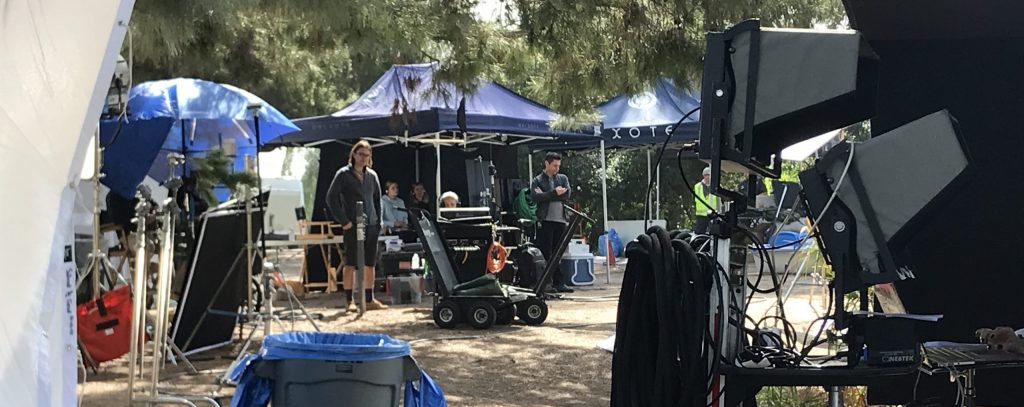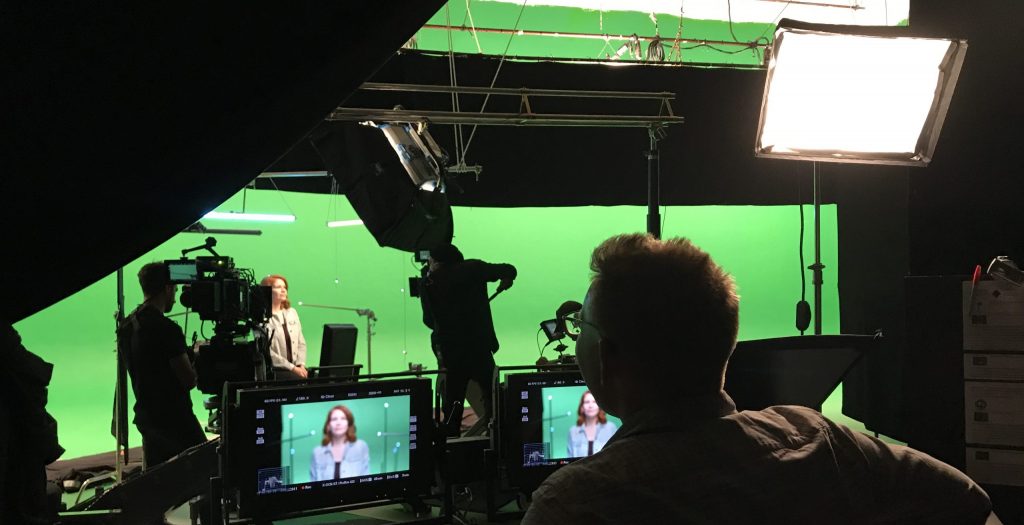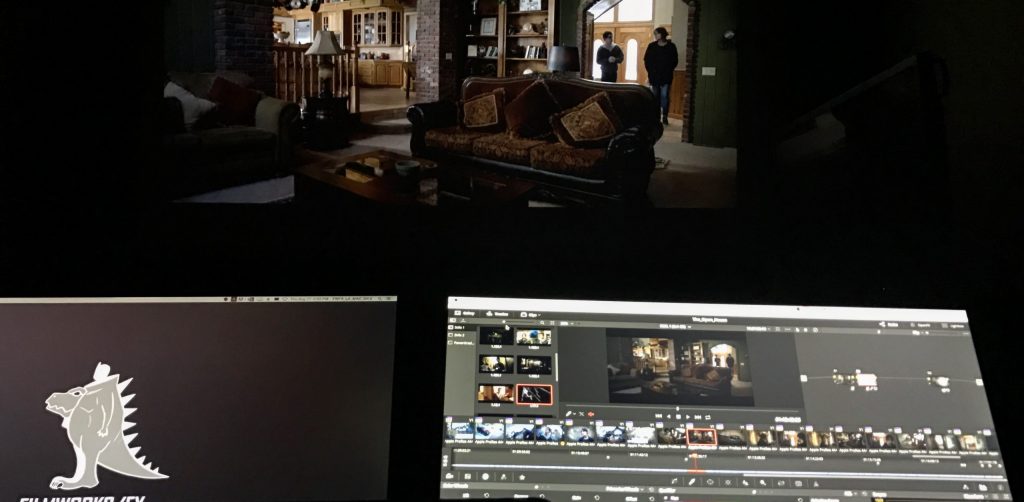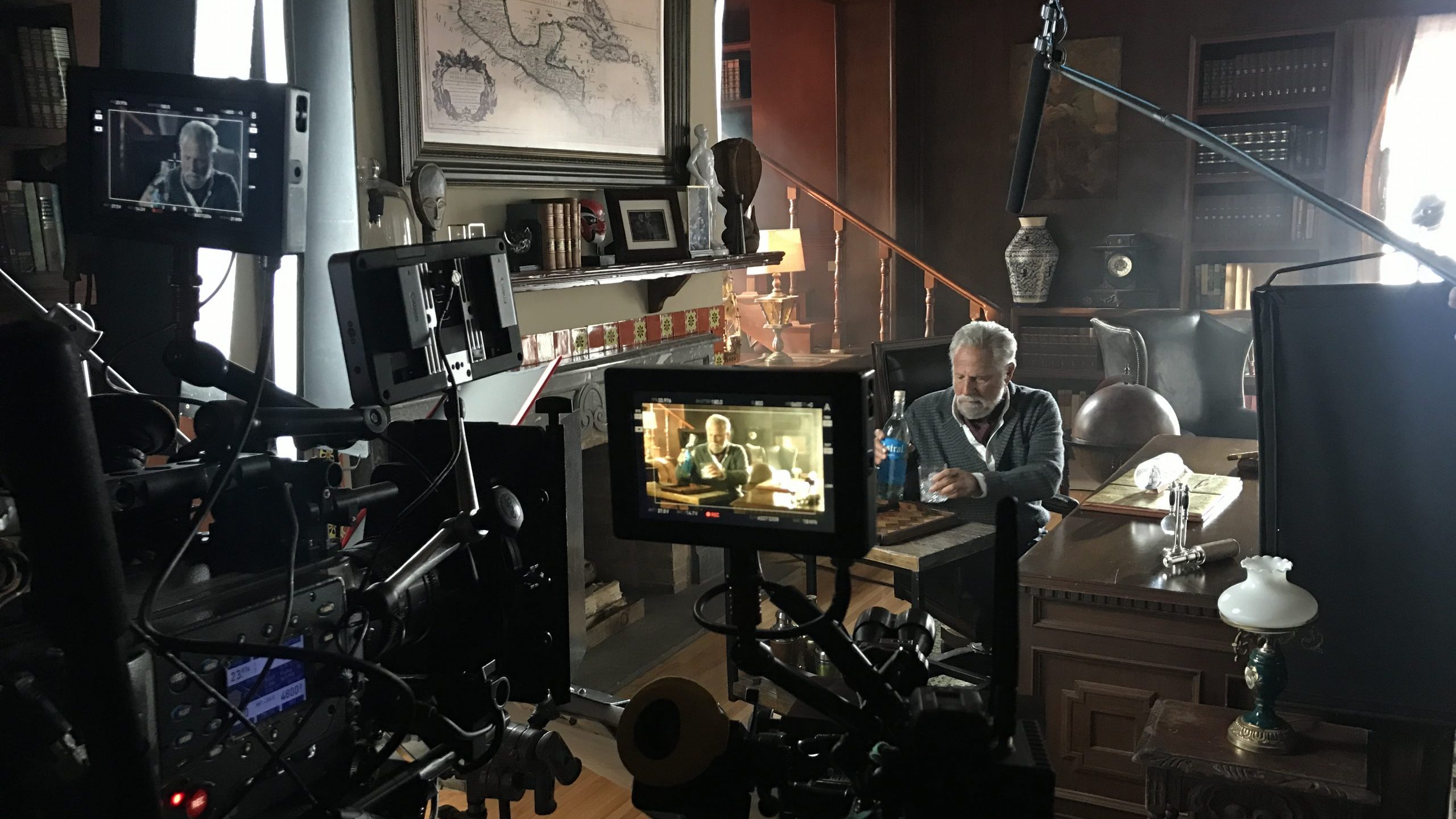For the past fifteen years I’ve been shooting mainly independent films and commercials all over the world. My job as a cinematographer has brought me to many beautiful, but also odd places I never thought I would visit. Each independent film production or commercial is its own little adventure. No job is the same, they all come with their unique set of challenges.
Whether it’s a location issue, scheduling issue, gear issue, personality issues, or money issue… anyway… which production doesn’t have money issues. It doesn’t matter how much money production has, whether it’s 200 million or 200 thousand dollars, there is never enough to do everything or puts everything the director wants on screen.
The independent film
Making an independent film or any film in general always starts with an idea, which turns into a development phase where the script is written, actors attached and money raised. As short and easy as this last sentence is, it never is the case in the real world. I’m a Belgian cinematographer, member of the Belgian Society of Cinematographers SBC. I’m based in Los Angeles and had the privilege of shooting over a dozen feature films, many short films and hundreds of commercials, for different markets worldwide. I worked with crews whose languages I don’t even speak but always managed to hold my own while ending up in the craziest and bizarre production situation. As a cinematographer you’re often very early on involved in the production process and the challenges that occur along the way. With this blog I’d love to share my experiences, the things that went right but also the things that went wrong… which is frankly a whole lot.
I’ve been part and have experienced the struggles that come with making an independent film and came up with the idea to create an app called MoviePrepper to help film makers in the creative process to breakdown the script, create their vision and share it with the crew to make the best movie, short film, TV-show or commercial possible.
Here we go:
Development
Often righteously called ‘Development Hell’. It is usually a very lengthy and painful process. Fleshing out the idea and writing the script is the easiest and most fun part of the development phase, although most writers or directors don’t get paid a dime for this in the independent film world.
The next step…
getting actors attached and finding the funds needed to take the project to pre-production is almost certain a rollercoaster with highs and many lows and… a lot of waiting in between. In independent film making the dynamic force of attaching actors and raising money is the perfect catch-22:
you need actors attached before an investor is interested to invest in the movie, but at the same time the talent agents don’t want to talk to you unless you have money in the bank to make the movie. See the problem? They simply don’t want to waste their and their clients time on something that isn’t real. No money means, no movie… It is just ‘talking about a movie’ and in Hollywood there is always a lot of talking going on.
Here you are… Now you have to do everything to convince both forces to come together and convince the actors and the investors that your movie is worth their time, effort and money.
First off… write the perfect and most compelling script and illustrate it with a look-book:
- Show your location ideas
- The props you want to use
- The costume ideas
- The cast you have in mind
- …
- and an overall look for the movie you want to make
Actors are mainly interested in the script and see how their character develops in the story while The investors are more interested in seeing your vision, but above all can they make their money back or does their ego gets stroked enough by being called an executive producer on a movie with their favorite actor in or other personal reasons. So many variables to consider with to make this happen. But having a clear vision with a nice visual presentation is the first big step.
A movie is a visual medium and words on paper are differently interpreted by each person who reads it. Each person creates their own vision, their own world, based on their personal experiences in the past that resembles what is written in the script, but often this is not what the director or the producer has in mind or sees. Therefore, using visuals in your presentation is very important to get your ideas across and to get everybody on the same page.
In this process a tool like MoviePrepper is perfectly placed to assist you. You can gather all your scene ideas, mood boards and illustrate them with the images that best get your visual ideas across.
Cool. That worked out…
The actors are attached and the financier has put the money in the bank. Now you can move into…
Pre-Production

Things are getting real!
At this point it’s time to hire the crew and start working with the director and producer to turn all the abstract and fantastic dreamed up ideas and turn them into practical ideas that can be executed within the production budget. The producer tells you that the helicopter chase in the script doesn’t work for the budget, but there is enough money to do a foot chase. Up to you guys, the artists, to make it as spectacular and compelling as the initial helicopter chase that was in the script. Let the rewrites begin…
But at the same time lets go ahead and start looking for locations, no time to waste:
Finding the right location for the scene is the logical first step in the Pre-production process. Without a location it’s impossible to shoot anything.
The formula to shoot a movie, short film, commercial or music video is pretty much the same:
All you need is:
- actors
- to show up on time (schedule)
- in a place (location)
- and bring a camera along (gear).
Easy… we all wish it really was!
Once the locations have been found and approved you can start to look into how you can practically shoot the scenes.
The director presents his or her ideas, the production designer builds on those ideas, and the cinematographer will also put in his 5 cents on how to best achieve the desired result.
Again… here comes another round of rewrites. This time is to make the story fit for the location that’s been found. Independent films usually don’t have to money to build all the locations that were in the original script.
As the rewrites happen the production designer, costume designer, cinematographer, director and their departments keep moving forward and prep all the scenes that haven’t changed… yet.
The one thing you can always count on during the whole production process is: THINGS WILL CHANGE.
Because of the never ending changes communication is key. Many emails, many calls and many ideas floating around between all the key crew members and their departments. It is definitely a challenge to keep everybody in the loop and in sync with the latest and greatest ideas and decisions. Each production has different methods and apps to during this process:
There is the never ending email chain that tries to keep you up to date, good luck finding something back in there. There is google docs, in where everybody keeps sending you stuff to the wrong email and forgets to give you permission, and by the time you have permission the idea is already obsolete, And there is dropbox, good luck finding the 5th picture from the left that looks like so and so…
The problem with all these different tools is that very often important new developments that impact the production are getting lost and result in a waste of time, resources and energy.
You have no idea how many times various departments were prepping using the wrong version of the script – remember the rewrites – because they missed one of the 100 emails that day. It is very important to stay organized and stay in sync with all the departments involved and have everything centralized so that everybody at all time knows what the latest developments are during pre-production.
Because a movie is the art form with most individual artists working on a single piece of art. A movie has a huge creative component but also a huge practical component and they all need to stay in sync with each other to keep moving forward.
With MoviePrepper you have this creative process centralized. You can breakdown the script and see the other key crew members ideas in one place and engage in a creative dialogue. This way it’s easy to anticipate on any new ideas that are floating around without wasting time and energy on stuff that was yesterday’s latest and greatest.
Movieprepper lets you easily update any script changes as the rewrites come in to make sure all the departments at working on the most current version. No more… oops I didn’t see that email. You can create a shot list, schedule or a mood board. Any updates become instantly available to everybody who is invited to work on the project. In the many years I’ve been shooting independent films on movies I found it very crucial to be at all times in communication with the director, production designer, costume designer, location scout and other departments.
Not all independent film productions have the opportunity and the money to bring all departments together under one roof in pre-production.
MoviePrepper tackles this obstacle as well:
The director can now be at home, the cinematographer in a coffee shop, the production designer in his workshop and everybody else involved can be where every they are and still prep the movie as they were all together in the same production office.
In the independent film world pre-production is often regarded by producers as a waste of money. They usually don’t have big budgets and they want to maximize the money they have on screen. In their eyes the money they spend in pre-production is money that is gone for production and doesn’t end up on screen. Nothing can be further from the truth. When you are not properly prepared to shoot a scene, it will cost you much more money. A simple prop that was not the right fit for the scene or a set wall that was not decorated but now ends up in the shot can delay your shoot day tremendously.
A shoot day can be very expensive. This is where it really cost money. All the crew members, the location, actors, and gear is now paid for and each minute the camera isn’t rolling is money not well spend.
By allowing the time in pre-production to talk through all the challenges you gain an enormous amount of time on set and eventually will save money or see it on screen. In pre-production you are only paying for the key-crew members time and effort, not the whole production apparatus.
The power of pre-production is often underestimated, but MoviePrepper helps you and your crew to get the maximum out of your pre-production. Breakdown the script to its elements, visualize and illustrate ideas by adding images, video or external links from Vimeo or Youtube and share those ideas with the rest of the crew to engage in a creative dialogue.
Well we got that down. Here comes the first shoot day…
Production

This is the fun phase. This is where everything you dream about in preproduction comes to life… uhm. Almost everything.
Production definitely comes with its own set of challenges. There are always unforeseeable circumstances that occur and you have to act quickly to tackle the challenges in order to keep the cameras rolling.
The better you are prepared, the better and easier you’ll find the solution for an issue that pops up.
For example:
an actor shows up late on set and now you are forced into shooting coverage of the other actors first before shooting the master shot.
Or
At the end of the day you run out of daylight and you still have a scene to shoot and you have only time for 2 setups. What do you do. Clock is ticking…
If you are well prepared you know very quickly what is absolutely necessary to complete the scene and to not have any missing elements in the story.
A typical production day is filled with all kinds of small issues and every decision has an immediate impact on the end result at this stage. You don’t have the time or money to second guess a decision. Therefore… again… having the production prepped the best way possible as a director, cinematographer, production designer, 1st assistant director will give you and the rest of the crew the confidence to create the best movie possible.
Seeing the collective efforts of these artists come together is magical. It’s absolutely true that the days can be long and hard, and egos at times will clash. But it’s all for the good cause of making the best movie possible and it gives a great deal of accomplishment at the end of the shoot day.
Post-Production

Alright. All the scenes are in the can…
It’s now up to the editor, sound designer and VFX artists to finish the movie and clean all those boom mics that pop into the shot.
You check the bank account again to see what is left and… shocker… Just like any other independent film production, you’ve run out of money or don’t have enough to finish the movie properly because so much extra stuff that was not accounted for popped up during production and the line producer kept writing those checks…
Time to call the bank again or beg the investors for more money to finish the movie. You’ve made it so far already why not put in a little, or a whole lot extra.
Somehow you ride on the fumes of the budget to make it through post and present the world with a new visual creation – The final cut of the movie – ready for everybody to enjoy or… hate (which tends to be the new thing these days – everybody is a film critic).
TO BE CONTINUED…

